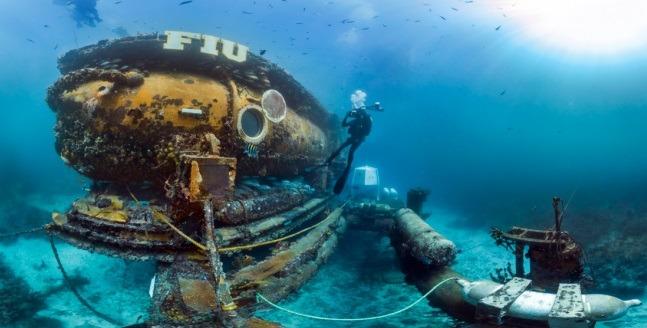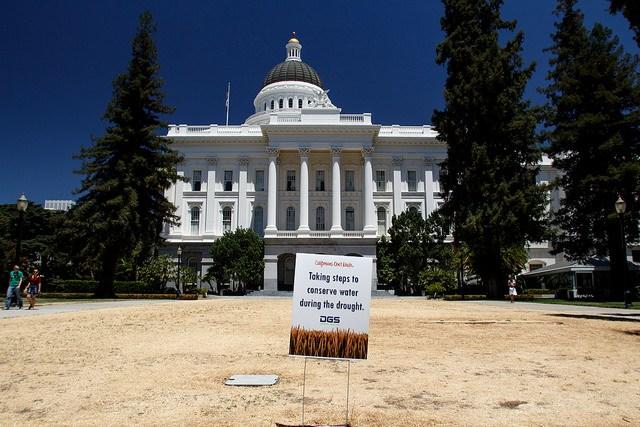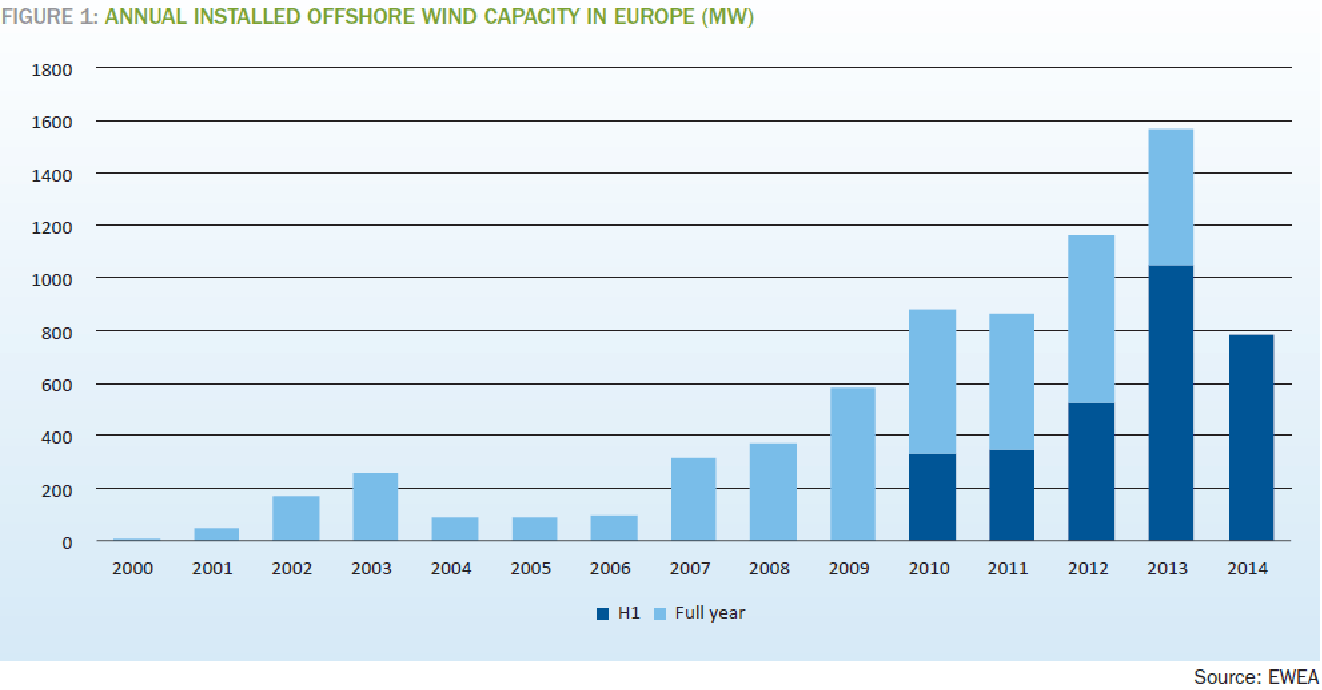Sacred Business Beyond Capitalism


By Giles Hutchins
Sacred business may sound like an oxymoron, but when you look at the word origins it becomes clear that the phrase doesn't have to be.
The word sacred derives from the Old French word ‘sacrer’ which originates from the Latin ‘sacer’ meaning dedicated, holy or reverence. Reverence means deep respect, deep admiration or deep affection – to love, venerate, cherish and respect.
St Ethelburga’s Centre for Reconciliation and Peace takes sacred to mean the reverence for life.
The word business comes from the Old English ‘bissinesse’ which means diligence and also a state of being busy. Also related is commerce, which originates from the Latin ‘commercium’ - com (collective) and merx (merchandise), the exchange of goods, services, intellect or social intercourse. Also related is profit, which originates from the Latin ‘profectus’ which means to make progress and ‘proficere’ which means to advance.
Capitalism is a particular economic and political approach which relies upon private ownership, capital accumulation and wage labor for profit and return on investment. It is now the dominant business paradigm in the West. Yet it is not what business is essentially about even though this prevalent logic might influence daily exchanges and interrelations whether in the West or beyond.
Capitalism is only a particular manifestation of the way business may be conducted. In fact, some may view it as a corruption of business, which undermines economic and social resilience. Its ideology spawns from an inherent corruption sown deep within the mind-set of modernity; a control-based abstract rationalism that defines ‘things’ as separate from their lived-in context with relationships as nothing more than self-maximizing power-plays, where one ‘thing’ benefits only at the expense of the other. It is what the anthropologist and cyberneticist Gregory Bateson insightfully understood as the ‘original corruption’ which pits us against Nature in an evolutionary cul-de-sac of selfish ascendance.
The renowned business adviser Peter Drucker once famously said:
"In times of turmoil, the danger lies not in the turmoil, but in facing it with yesterday’s logic."
Yesterday’s logic is one that sets humans apart from each other and from the rest of Nature viewed through the lens of competition, control, separateness and rationalism. It is this flawed logic that is at the heart of all our crises – world poverty, climate change, biodiversity loss, social inequality, wars, etc.
As CEO of Unilever, Paul Polman has said:
‘Too many people think in terms of trade-offs that if you do something which is good for you, then it must be bad for someone else. That’s not right and it comes from old thinking about the way the world works…We have to snap out of that old thinking and move to a new model."
This new model is actually as ancient as it is fresh, it is the logic of Nature and can be found within and all around us if we so choose to perceive life beyond this devastating illusion of separation. To do this, we can re-awaken the sacred through our deeper understanding and attunement of Nature.
By its very nature, attending to life beyond the illusion of separation allows for a culture of reverence to form, as our inner-outer relation attunes with the love and wisdom flowing through every moment in our midst. This is to experience the sacredness of life, beyond the corrupting confines of capitalism, materialism and rationalism. This sacred understanding allows us to recognize the reciprocity within and throughout Nature. It is not competition that is the inherent grammar of life, it is interrelations, co-creativity and fluid reciprocity – this is the business of Nature.
In business, as in Nature, everything works through relationships. Trust is the soil from which healthy vibrant relationships take root. Relationships struggle to survive without trust. Trust requires mutual respect and understanding, an empathic reaching out beyond oneself that allows for reciprocation. And so we may see that the true Nature of business is the business of Nature.
Deep respect for ourselves, each other and Nature is not some luxury add-on which can be dispensed with in times of economic downturn, it is foundational to who we truly are; without it we become rudderless, tossed this way and that by inauthentic egotistic whims – distracted, dis-eased and deluded.
It is through the simple (yet not always easy) shift in our way of attending to life that we may open up to the inherent wisdom of Nature. Here we find the ground of our being beyond the fragmenting dichotomies of yesterday’s logic. Business can offer a richly texture, diverse, often windswept and turbulent, yet co-creative, participatory ocean for spawning right thought, word and deed.
Business follows in the wake of what is demanded of it, otherwise we have busy-ness for busyness sake - not exactly Homo sapiens living up to our name.
Rather than our culture’s infatuation with stuff fueled by our egotistic incessant grasping and wanting due to our sense of separation and severance from Nature, imagine the creative potential and entrepreneurial flair of business minds following in the wake of demand for the pursuit of true happiness, of love, of soulful heartfelt attunement within the wisdom of life. This is sacred business and it is at the heart of any new society.
Author of ‘The Nature of Business’ and ‘The Illusion of Separation’ Giles blogs at www.thenatureofbusiness.org, Facebook community https://www.facebook.com/businessinspiredbynature and tweets @gileshutchins.
PR Firms Take a Stand on Climate Change


Public relations (PR) is a powerful but unseen force in our society. Companies hire PR firms to make them look as good as possible. When the companies do something they are proud of, they do everything they can to make sure everyone hears about it (including, sometimes contacting reporters like us). When the companies do things that are not so great, they “spin” the news to make it sound harmless. PR firms make their money from fees paid by their clients and have typically been value-neutral, meaning that they promote whatever their clients want them to promote.
So it’s a pretty big deal when a number of the largest PR firms come out, in response to surveys administered by the Guardian and the Climate Investigations Centre, and collectively announce that they will no longer represent firms that want to spread messages denying the reality of man’s role in climate disruption. Among these firms are: WPP, Waggener Edstrom (WE) Worldwide, Weber Shandwick, Text100 and Finn Partners.
Weber Shandwick spokeswoman Michelle Selesky told the Guardian that, “We would not support a campaign that denies the existence and the threat posed by climate change, or efforts to obstruct regulations cutting greenhouse gas emissions and/or renewable energy standards."
Likewise, Rhian Rotz, speaking for WE said, “We would not knowingly partner with a client who denies the existence of climate change.”
WPP, based in the U.K., is the world’s largest advertising firm by revenue. They commented that, “We ensure that our own work complies with local laws, marketing codes and our own code of business conduct. These prevent advertising that is intended to mislead and the denial of climate change would fall into this category,”
However, a spokesperson noted that individual entities within the organizations remain free to make their own client decisions, which could include “campaigns opposing regulations to cut greenhouse gas emissions.”
Notably absent from this group was the U.S.-based Edelman, the largest, independently-owned PR firm in the world. Edelman's sizable client roster includes the American Petroleum Institute, a group that actively campaigns against climate regulations, as well as Shell and Chevron. The firm took the position that it evaluates clients on a case-by-case basis. Spokesman Michael Bush politely dodged the question, stating only that, “Expanding the dialogue in a constructive manner, and driving productive outcomes to solve energy challenges are the key criteria for evaluating client engagements.”
That was early in the week, before the Guardian ran their story. A few days later Edelman came back with a quickly reconsidered position -- a classic example of damage control. A statement on their website read, “Edelman fully recognizes the reality of, and science behind, climate change, and believes it represents one of the most important global challenges facing society, business and government today. To be clear, we do not accept client assignments that aim to deny climate change.”
Of course, denying climate change and trying to block responsive action are two different things, but the statement is still a significant one. After all, if we could take denial off the table completely, responsive action would be far easier to achieve.
Richard Edelman, CEO, also wrote a blog post on the issue entitled “The Climate Change Imperative.” The article describes a dinner conversation he’d had with Jeffrey Sachs, director of the Earth Institute at Columbia University, about the need for dramatic action on climate change, in which he made the case for strong private-sector involvement. He closed by quoting Keith Weed, CMO for Unilever, who, when asked to see the business case for sustainability, said, “I would love to see the business case for the alternative.”
Image credit: Rick Oppenheim: Flickr Creative Commons
RP Siegel, PE, is an author, inventor and consultant. He has written for numerous publications ranging from Huffington Post to Mechanical Engineering. He and Roger Saillant co-wrote the successful eco-thriller Vapor Trails. RP, who is a regular contributor to Triple Pundit and Justmeans, sees it as his mission to help articulate and clarify the problems and challenges confronting our planet at this time, as well as the steadily emerging list of proposed solutions. His uniquely combined engineering and humanities background help to bring both global perspective and analytical detail to bear on the questions at hand.
Follow RP Siegel on Twitter.
Catlin Seaview Survey Assesses Climate Risks in Florida


We have long heard about future perils to our coasts due to climate change, but the allure of the ocean views and mild weather keeps pulling us to the shores. This is especially true in Florida, where despite the constant threats of hurricanes, communities keep growing with a population approaching 20 million. Insurance companies are at particular risk because of that continued growth and development along with future climate volatility. One hurdle confronting insurers, however, is that only about 5 percent of climate change science research is actually focused on oceans. Catlin Group, a US$4 billion insurance and reinsurance company, has been taking steps to change that.
The company is sponsoring the Catlin Seaview Survey, a scientific initiative that aims to create a baseline record of the globe’s coral reefs. By filming these reefs in high-definition, panoramic vision, the organization’s goal is to have data readily available so scientists, the general public and governmental officials can gauge the challenges our reefs are confronting due to fishing, pollution and of course, climate change. The latest project is now underway in Florida.
The Catlin Seaview Survey is now partnering with the National Oceanographic and Atmospheric Association (NOAA) to research and record the state of marine sanctuaries off of America’s coasts. The first joint expedition is a study with Florida International University to evaluate the reefs within the Florida Keys National Marine Sanctuary. Scientists from Australia and NOAA’s Office of National Marine Sanctuaries are also involved in the effort; Google Maps technology will allow the public to access the photographs online. Such an undertaking is hardly cheap: So why is the Catlin Group involved?
“As a leading insurer and reinsurer, we believe that further factual research into climate change is essential to the insurance industry’s ability to continue helping our clients manage risks in the years to come,” says Stephen Catlin, chief executive of Catlin Group. “The impartial scientific data gathered by Catlin-sponsored research programs aim to strengthen our understanding of how changes in the oceans may impact the rest of the planet.”
Such research is an important long-term business prerogative for Catlin and its competitors. The oceans are one part of our global geography that still begs for further understanding. More concrete knowledge of how our oceans are changing can help Catlin when it comes to advising clients about potential long-term risks when investing in regions such as Florida and the southeastern United States. And an even better grasp of how coral reefs can be protected, which would in the long term offer a buffer from storm surges and erosion, could help mitigate future risks.
Florida is the perfect test bed for this work: It is the only U.S. state with expansive coral reef formations close to its shores; in fact, the Sunshine State hosts the third largest barrier reef ecosystem on Earth. But it’s important to remember this work goes beyond bolstering an insurance firm’s portfolio. Tourism is a huge part of Florida’s economy — the continued loss of coral reefs will wipe out local economies, too.
Image credit: Catlin Seaview Survey
Leon Kaye has lived in Abu Dhabi for the past year and is on his way back to California. Follow him on Instagram and Twitter. Other thoughts of his are on his site, greengopost.com.
Can Conan O’Brien Convince Californians to Save Water?


California’s historic drought is no laughing matter. But the state of California and the Natural Resources Defense Council are trying to inject some humor into their efforts to encourage Californians to conserve water, teaming up with Conan O’Brien and Andy Richter on a series of public service announcement (PSA) videos that feature water-saving tips.
Part of California’s “Save Our Water” drought awareness campaign, the new PSAs cover topics from car washing (you can save 60 gallons of water by taking your car to a carwash rather than washing it by hand – and you can bathe your kids there, too, Richter points out) to pool covers (swimming pools evaporate up to 40,000 gallons of water a year; even if you don’t have a pool, you can buy a pool cover to impress people and make them think you have one, the funnymen say).
The comedians even poke fun at the idea that saving water takes too much work; there are many “lazy” ways to conserve water, they say: running dishes through a dishwasher instead of washing them yourself, using a carwash rather than hand-washing your car and their more tongue-in-cheek suggestion of skipping showers.
2013 was the driest year on record in many parts of California, leading Gov. Jerry Brown to declare a state of emergency in January. In addition to directing state agencies to expedite farmers’ access to water, safeguard drinking water and prepare for an extreme fire season, Brown also called on his fellow Californians to reduce their water use by 20 percent. The “Save Our Water” campaign, a partnership between the Association of California Water Agencies and the California Department of Water Resources, aims to meet the governor’s target, promoting simple water-conserving tips through lawn signs, social media campaigns, billboards and radio ads.
The partnership with O’Brien and Richter isn’t the first time that the “Save Our Water” project has recruited celebrities or come up with creative marketing campaigns: It has already featured PSAs from Lady Gaga and Sammy Hagar and included the clever “Brown is the New Green” slogan to urge Californians to let their lawns go brown by watering only twice a month.
California’s education campaign may be light-hearted and silly, but the Golden State is starting to get serious about restricting water use. Most communities across the state have been relying on voluntary water restrictions to motivate residents to do their part during the record-breaking drought. But in mid-July, the State Water Resources Control Board adopted regulations that allow municipalities to impose fines of up to $500 a day for water-wasting activities such as runoff from outdoor sprinklers and hosing down driveways and sidewalks.
Will O’Brien and Richter’s comedic PSAs help the convince Californians to cut their water use by 20 percent? The results of celebrity social and environmental awareness campaigns have historically been mixed – from “We Are The World” and Farm Aid to the campaign to end genocide in Darfur. Whether or not “Team Coco” can lend its star power to the cause of water conservation, social marketing studies have shown that positive campaigns like this one, highlighting simple ways individuals can make a difference, are much more effective than negative ones that focus on doom and gloom. While the water-conservation jokes may not be as funny as O’Brien and Richter’s standard material, these PSAs are certainly more upbeat than Keep America Beautiful’s iconic “crying Indian” commercial from the ‘70s and don’t reprimand individuals for eco-unfriendly lifestyles, like the Californians publicly “drought shaming” their water-wasting neighbors on Twitter.
Image credit: Flickr/Kevin Cortopassi
Passionate about both writing and sustainability, Alexis Petru is freelance journalist based in the San Francisco Bay Area whose work has appeared on Earth911, Huffington Post and Patch.com. Prior to working as a writer, she coordinated environmental programs for Bay Area cities and counties. Connect with Alexis on Twitter at @alexispetru
Top 30 Cities for Green Real Estate


There are numerous ways to measure the sustainability of a major city these days. Cutting-edge, energy-efficient transportation, renewable energy and recycling/reuse programs are all excellent indicators of a “green” municipal mindset. So is green real estate. Energy-efficient, certified real estate construction has been gaining prominence in recent years, so much so that it is now addressed in bylaws in many cities across North America.
So it's also no surprise that the real estate group CBRE came up with a list of the top 30 U.S. cities to feature green commercial building construction. What is intriguing is the variation between cities when it comes to what defined that green emphasis.
Cities on this list are ranked according to the total percentage of square footage that is designated to be either LEED or Energy-Star certified real estate (the second numerical column, found on page 4). The top 30 is then broken down further according to a) the total percentage of green buildings in the city, b) the percentage of LEED-certified buildings and c) the percentage of Energy Star-certified buildings. The list also shows the percentage of square footage for LEED- and Energy Star-designated buildings.
The percentage of green buildings in a city can vary dramatically from the percentage of square footage, as the stats for Minneapolis/St. Paul demonstrate. Although the percentage of green buildings for this leading city is just under 30 percent, its designated square footage is 77 percent. According to the report authors, today’s certified buildings are often larger than non-certified buildings, lending a disproportionate view of green market growth. But there’s no question that both certification programs are gaining popularity in America’s largest cities. LEED has gained a good foothold in cities like San Francisco, Seattle and Minneapolis, whereas Energy Star has been the preferred method of certification in Chicago, Houston and Atlanta.
Some highlights include:
- San Francisco comes in second on the list, with 67.2 percent of its commercial square footage designated as green.
- Chicago is third, with 61.2 percent of green real estate.
- Houston beats out Atlanta, Los Angeles, Denver and Seattle, with 54.8 percent of its commercial square footage dedicated to green-certified construction.
- In most cases, the percentage of square footage for Energy Star-efficient commercial space was higher than the square footage of LEED-certified floor space. Seattle is an exception to that, which came in eighth on the list with 46.6 percent total floor space, and a greater percentage of LEED square footage (31.8) than Energy-Star-certified construction (28 percent).
What’s the takeaway message of this new list? In a nutshell, green real estate construction is growing. The percentage of certified commercial office space in the U.S. is now more than six times what it was in 2005 (39.3 in 2013 compared to 5.6 in 2005).
Image credit: CBRE
Human Values and Corporate Social Impact: Respect and Shame


Editor's Note: This is the third post in a six-part series written by Donald J. Munro of the University of Michigan. You can follow the whole series here.
By Donald J. Munro
The desire for respect derives from our experience in social hierarchies, where we prize respect and have an aversion to shame, a disvalue. Sometimes respect or shame are related to the value of loyalty to superiors and how they treat us. These are instances in which a moral category can be used as a control mechanism for enforcing social duties. These duties may involve cooperation for the common good, or simply conformity to social customs. This reveals that respect/shame are both values or disvalues, and universal social emotions. Culture determines the conditions and forms under which they arise.
Shame involves an individual violating a rule, being aware of the violation, and knowing that others know of the violation. It is not embarrassment and is not guilt. It is not guilt because one can feel guilt before God even if no person knows about it. Shame involves an attack on one’s inner worth. It can be used as a form of punishment. It is one of those traits that reveals self-reflection, of which humans alone seem to be capable (Professor Sin yee Chan, University of Vermont).
In addition to respect and shame being among Mencius’ four innate “minds,” the earliest Confucians regarded shame as a control device as being superior to the use of laws. The Analects (2.3)of Confucius (551-479) states:
If the people be led by laws, and uniformity sought to be given them by punishments, they will try to avoid the punishment, but have no sense of shame. If they be led by virtue [virtuous models], and uniformity sought to be given them by rules of propriety, they will have a sense of shame and moreover will become good.
During the period Jan. 1 through Sept. 20, 2013 JPMorgan Chase has been the target of the following investigations:
- Bribery or Corruption: August 17, 29-30, 2013. A program once called “sons and daughters” at JPMorgan Chase, may have involved hiring the children of the Communist Party Elite as facilitators for doing business in China.
- Consumer Fraud: Sept. 19, 2013 JPMorgan Chase will pay $310 million in Restitution and $80 million in fines over credit card practices.
- Money Laundering and Risk Management: Feb. 14, 2013 The U.S. Federal Reserve and Office of the Comptroller of the Currency targeted JPMorgan Chase for lapses in risk management as well as money-laundering controls. On August 24, Regulators identified deficiencies in its anti-money laundering procedures. The bank stopped taking new business from foreign depositors.
- Anti-competitive behavior: July 30, 2013 The Federal Energy Regulatory Commission (FERC) accused JPMorgan Chase of rigging electricity markets, by manipulating power prices in California and the Midwest, out of its Houston trading desk. Regulators said the bank had created innovative and illegal ways to take money out of the California market. On July 30, JPMorgan Chase agreed to pay $410 million to settle the accusations. The bank said that the penalties would not have a material impact on profits “due to reserves previously set aside.” FERC will not seek individual sanctions against the four bank employees named in the settlement.
From 2009-2013, JPMorgan Chase has had to pay $31.28 billion in fines and other legal costs.
One can ask if the employees and other stakeholders in JPMorgan Chase experience shame when faced with these investigations? Individual citizens would be expected to. Individual persons are known sometimes to accept responsibility for bad acts, and feel shame.
But, unlike individual humans some of the time, the “person” of JPMorgan Chase, that is the “Corporate Personhood,” normally has not accepted responsibility for its transgressions. It has settled, agreeing to pay a fine that is part of the art of doing its business. And that has been okay with the governmental regulatory agencies. According to John C. Coffee Jr., a professor of securities law at Columbia University, “The SEC alleges not the facts that it can prove, but the facts that it can settle on.” In a report from the Senate Permanent Subcommittee on Investigations, JPMorgan Chase misled shareholders and the public in April, 2012. Jesse Eisinger (ProPublica) wrote:
“Despite JPMorgan’s smoke screens, the regulators deserve the public humiliation they have received….JPMorgan repeated the same misdeeds that other banks successfully pulled off at the height of the financial crisis: mismarking portfolios of assets and misleading the public. This was condoned by regulators. Regulators and prosecutors have been averting their eyes for years from rotted bank assets and rotted bank morals; why would JPMorgan expect any different reaction?” (cited in NYT Business, 3/20/13, p. B5)
Jamie Dimon, Chairman and CEO of JPMorgan Chase, did apologize “for foreclosure mistakes” at a shareholder meeting in May 2011. He apologized to Congress on June 13, 2012, for the bank losing $2 billion in risky investments. The bank’s traders had inflated the value of their monetary positions to hide their losses. He called it “a terrible, egregious mistake.” But an apology for a mistake is not the same as accountability. The latter carries additional responsibilities for the firm, and an acceptance of a large fine. At the moment, that fine is about $13 bilion. It is unclear how much additional aid will go the existing foreclosure relief and how much can be deducted from taxes. So it is unclear how much accountability is being called for.
Next: Fairness
Image credit: Flickr/epicharmus
Donald J. Munro is professor emeritus of philosophy and Chinese at the University of Michigan. Munro connects venerable philosophical traditions to modern scientific discoveries, always with a concern for the ethics of human action. His books include The Concept of Man in Contemporary China, Images of Human Nature: A Song Portrait, and Individualism and Holism: Studies in Confucian and Taoist Values. In recent years he has been the Ch’ien Mu Lecturer in Chinese History and Culture (2006) and the Tang Junyi Visiting Professor (2009) at the Chinese University of Hong Kong. He is a founding member of the Interfaith Partnership for political Action (ippa.us).
Downtown Las Vegas: A Surprising Hub of Sustainable Thinking


I recently had a chance to visit downtown Las Vegas, a place many tourists don't even know exists. Although it's been somewhat neglected for years, the area is enjoying a well-deserved renaissance. New residential buildings are slowly cropping up, bike lanes are going in, and even a public gathering space made from old shipping containers has appeared. All of this is beginning to create a walkable, diverse and sustainable center for a city that for decades hasn't really had one.
The major forces pushing this "new" Las Vegas are a forward-thinking city government, coupled with a $350 million investment from Zappos' CEO Tony Hsheih, through what's known as the Downtown Project. The project has invested in dozens of startup businesses, sowing the seeds to catalyze a new downtown community.
I had a chance to stop by city hall to talk to the city's Chief Sustainability Officer Tom Perrigo, as well as visit with SHIFT, one of the many startups funded by the Downtown Project. In the video below, you can learn more...
Video after the jump:
GreenPod Development: Creating Green Modular Homes


Inspired by the concept of making a sustainable lifestyle easier, GreenPod creates low-maintenance modular homes with healthy interiors.
Factory-built kits can be transported to a building site and easily assembled. Using state-of-the-art technology and materials, these homes have a small footprint and conserve both water and energy. The homes, including tree houses and floating homes, are customized to the site, have passive solar features and minimize site disturbance.
The walls, floor and roof of the homes use SIPs (Structurally Insulated Panels), with a rain shield on the exterior. “The homes are precut when they come out of the factory, so they can go up in a day or two on the site,” says Ann Raab, GreenPod’s founder. “SIPs are the best bang for your buck. Although they are slightly more expensive than a stick built home, SIPS have a short 2.7-year payback. They are stronger and straighter than wood, with no job waste [because the SIPs are precut]. Everything about SIPs delivers what we are trying to create.”
Raab has a vision to simplify green building, while making sustainable living affordable for the mainstream. GreenPod homes are customized to fit a variety of budgets, with optional features including: locally-crated furniture containing organic textiles, reclaimed building materials, solar panels and a biofilter refrigerator.
GreenPod embraces the concept "go small and go gorgeous," helping people to downsize with these space-efficient homes that cost between $150 and $200 per square foot. They offer a locally-made, multiple purpose furniture line that seamlessly integrates into these small spaces -- with stacking tables and beds that fold into the ceiling. In addition, the houses feature interior glass to visually enlarge spaces, movable walls, natural lighting and high-transom windows for privacy. To reduce the negative health impacts from the electromagnetic fields generated by some electronic devices, bedrooms have "kill switches" that cut power to specific outlets, creating healthy neutral zones.
Because of their energy efficient features and small size, the heat load of GreenPods is minimal. Raab recommends a ductless heat pump that heats, cools and filters the air efficiently or simple electric wall heaters. A renewable energy system can be installed to generate electricity.
High indoor air quality is another important feature of these houses. Because they have little air infiltration due to a tight building envelope, offgasing from furniture, toxic building supplies and finishes can have an amplified impact. Raab is diligent about using non-toxic materials, such as SIPs with formaldehyde-free glue, and providing sustainable furniture.
Because much of the construction work is realized in an enclosed factory, building site construction work is condensed and streamlined. GreenPod customizes home design for the building site and budget of the project, assists with the building code permitting process, helps coordinate delivery of the pod, and offers technical assistance as needed to the contractor. The contractor prepares the building site, lays the foundation, attaches to the pod to the foundation and makes any needed connections. Building and delivering the pod can take as little as 14 to 16 weeks, saving both time and money in the streamlined process.
GreenPod certainly provides a visionary green product to the market. "I'm excited to take building design and construction to a new level, while using the most innovative and natural materials, that will leave the smallest impact on the planet," says Raab.
Image credit: GreenPod
Sarah Lozanova is a regular contributor to environmental and energy publications and websites, including Mother Earth Living, Green Building & Design, Triple Pundit, Urban Farm, and Solar Today. Her experience includes work with small-scale solar energy installations and utility-scale wind farms. She earned an MBA in sustainable management from the Presidio Graduate School and she resides in Belfast Cohousing & Ecovillage in Midcoast Maine with her husband and two children.
Navigating the 'Wild West' of Eco-Labels: Science-Backed Tips for Consumers


The Environmental Protection Agency’s (EPA) and Department of Energy’s (DOE) Energy Star program is one of the most recognizable and trusted environmental labels in the marketplace – but it wasn’t always that way.
Launched in 1992 to help consumers find the most energy-efficient products, the program initially allowed companies to sign up to use the Energy Star logo by self-reporting their products’ energy savings; the EPA and DOE would perform only occasional spot-checks on items carrying the eco-label. But a federal audit in 2010 revealed that some Energy Star products did not live up to their energy-savings claims. Worse, the program even accepted several fictitious products created by the Government Accountability Office to investigate Energy Star’s certification process like a gasoline-powered alarm clock the size of an electric generator.
Since the scandal, the EPA and DOE changed the way the energy-efficiency initiative approves new products, now requiring companies to have their products – and energy-savings claims – tested at independent laboratories.
The case of Energy Star illustrates the dilemma consumers face when they come across a product with a label boasting environmental responsibility: Can consumers trust that the claims these eco-labels make are true?
The legal landscape
When a shopper finds an environmental claim on a product – especially if it’s an official-looking label – he may think this stamp of approval is endorsed by the government, but that’s not necessarily the case. In 2012, the Federal Trade Commission (FTC) strengthened its regulations on environmental marketing claims – or “Green Guides” – as a host of such assertions flooded the marketplace, due to growing consumer demand for eco-friendly products.
“The FTC Green Guides clarified the rules of the game,” says Scot Case, director of market development for UL Environment, which conducts testing, certification and validation for companies’ environmental claims. “Before the FTC Green Guides it was the wild, wild West … Now it’s just the Wild West.”
While government oversight of environmental claims and labels has improved, there are still cases of “greenwashing” in the marketplace. This year alone, Case says, a plastic lumber company exaggerated its products’ recycled content, a plastics company made false claims about its products’ biodegradability and a diaper company misled customers into believing its diapers were fully compostable and biodegradable. Fortunately, these companies and their false advertising were caught by the FTC, but what about greenwashing cases that slip by?
Tips and resources for consumers
The EPA has several key recommendations for shoppers looking to purchase more environmentally-friendly products: Look for eco-labels backed by widely-respected, trusted organizations and claims that have been verified by an independent third-party. A label should also be based on a set of standards, the EPA says, and that criteria should be readily accessible to the public – for example, published online.
The FTC agrees, writing in its “Shopping Green” guide for consumers: “Seals or certifications can be useful, but only if they’re backed up by solid standards and give you enough information to understand what they mean. A package also should tell you about any connections the company has to the organization behind the seal, if a connection might influence your opinion about the certificate or seal.”
For example, the nonprofit Roundtable on Sustainable Palm Oil (RSPO) purports to certify palm oil that was grown without contributing to deforestation. But environmental groups like Greenpeace have criticized RSPO’s verification program due to the palm oil’s industry heavy-handed influence over the group.
As with most types of research these days, it seems consumers’ best bet is to go online to investigate a green label they encounter. I recently noticed a Cradle to Cradle seal on my bottle of Method shower cleaner, and while I’m familiar with the term, “cradle to cradle,” I didn’t know much about the certification program. After a quick Internet search, I discovered that this standard to recognize a product’s overall environmental impact seemed reliable: It is based on a strict set of standards, it requires independent testing and it does not seem to be under any undue corporate influence.
In addition to simply looking up eco-labels one at a time on the web, consumers can get Consumer Reports’ opinion on environmental claims through its GreenerChoices.org database of labels. For example, the database tells us that the phrase, “100 percent biocompatible,” essentially has no meaning and no standard behind it, whereas the U.S. Department of Agriculture’s organic label is highly meaningful and is verified.
The EPA lists its green labeling programs, such as Energy Star and WaterSense, on its website, and the FTC’s “Going Green” consumer guide explains green marketing claims such as “non-toxic,” “ozone-friendly” and “recyclable.” UL’s Scot Case also recommends consumers check out Ecolabel Index, an online directory that is currently tracking 459 eco-labels worldwide.
If it’s not easy to find information about a label online, Case says, consider that to be a red flag; it may not be a reliable claim.
“Don’t use a label unless you understand it,” Case says. “Look for independent, third-party validation, and complain loudly if you don’t get it.”
Image courtesy of UL Environment
Passionate about both writing and sustainability, Alexis Petru is freelance journalist based in the San Francisco Bay Area whose work has appeared on Earth911, Huffington Post and Patch.com. Prior to working as a writer, she coordinated environmental programs for Bay Area cities and counties. Connect with Alexis on Twitter at @alexispetru
German, Swedish Groups Join in $1.6 Billion Offshore Wind Farm


Germany's offshore wind investment received a big, much-needed boost on August 11 as Munich City Utilities and Sweden's Vattenfall announced a huge wind-farm investment off the German North Sea coast.
Due to start construction in 2015 and come online in 2017, the $1.6 billion Sandbank offshore wind farm project entails Vattenfall installing 72 turbines off the German North Sea coast. That would add a massive 1.4 terawatt-hours (TWh) of clean, renewable electricity to the German grid, enough to supply some 400,000 homes, according to an AFP news report.
1.4 terawatt-hours of offshore wind power capacity
Vattenfall will own a 51 percent ownership stake in Sandbank. The Swedish energy group operates 900 turbines in Northern Europe and the U.K., making it the second largest offshore wind farm operator worldwide, according to the company.
Commenting on Sandbank, Vattenfall's Gunnar Groebler stated:
"The Sandbank project is further testament to Vattenfall's strategy of consistently focusing our growth efforts on the expansion of renewable energy," said an executive responsible for renewable energy.”
Sandbank is the first offshore wind farm project announced since Germany enacted a new version of its renewable energy law on August 1. That included a reduction in state support for offshore wind farms. It's the second North Sea wind farm project between Vattenfall and Munich City Utilities. The 80-turbine Dan Tysk, the first, is due to begin operations in 2015.
Europe's offshore wind power sector
Commenting on market conditions in Europe's offshore wind power sector, European Wind Energy Association (EWEA) Deputy Chief Executive Officer Justin Wilkes stated:
“To ensure healthy growth in the latter part of the decade, and to ensure offshore wind energy plays its role in meeting the EU’s competitiveness, security, renewable and climate objectives, the industry must be given longer-term visibility. An ambitious deal on the 2030 Climate and Energy package by the EU’s Heads of State in October would send the right signal, making their decision particularly important for the offshore wind sector.”
Sixteen offshore wind farms with a total 4.9 gigawatts (GW) of power capacity are under construction in Europe, according to the latest report from the EWEA released July 14. A total of 781 megawatts (MW) from 224 offshore wind turbines were fully grid-connected during 2014's first half, a 25 percent drop from that a year prior.
"Despite offshore wind power installations being lower than in the first six months of last year, it remains the fastest growing power sector in Europe," Wilkes noted.
In addition, 282 offshore wind turbines were installed and were awaiting connection to the grid, bringing the total awaiting grid connection to 310. That will add another 1,200 MW to the European Union's total offshore wind power capacity, according to EWEA.
*Images credit: 1), 2): Vattenfall; 3) EWEA